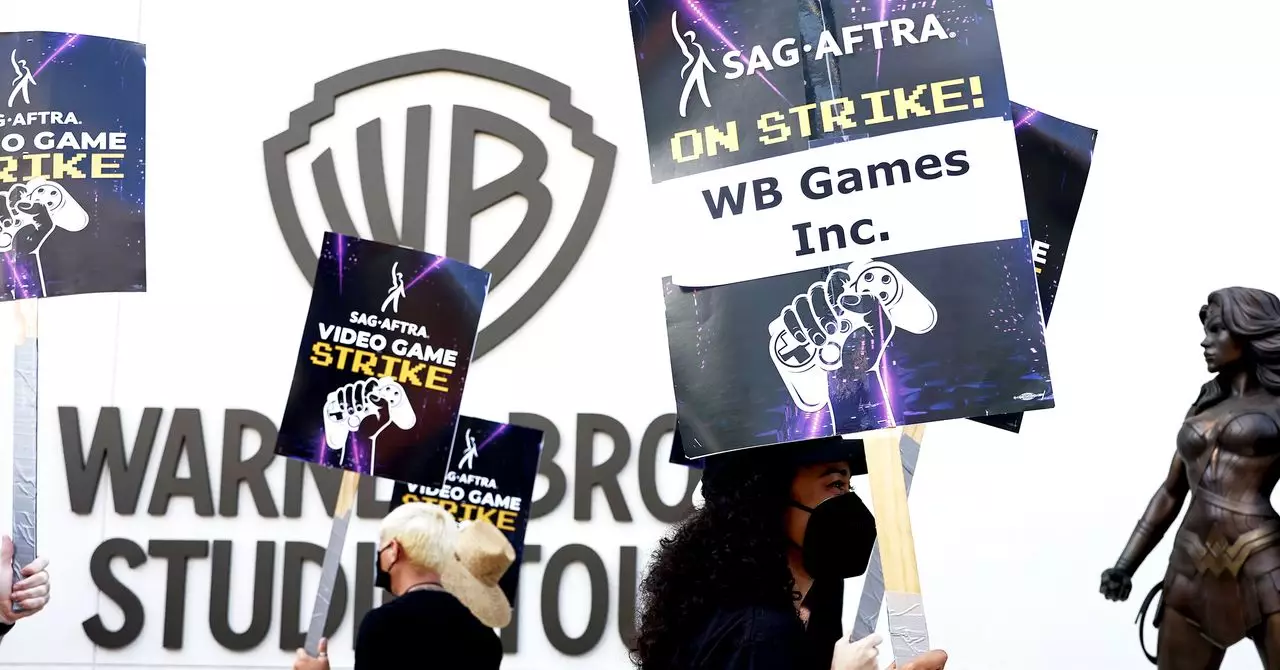The recent ratification of a groundbreaking contract for video game performers marks a significant turning point in the entertainment landscape, especially within the digital realm. With an overwhelming 95% approval from SAG-AFTRA members, this agreement not only brings closure to a nearly yearlong strike but also sets a bold precedent for actor protections against the rising tide of artificial intelligence. This is more than a mere contract; it’s a strategic assertion that artists’ rights and creative integrity are non-negotiable in an industry increasingly influenced by automation and digital duplication.
This pact carefully balances tangible benefits—such as annual salary increases across three years—and crucial safeguards against AI exploitation. The industry’s pivot to digital realism, while offering innovative storytelling opportunities, has threatened to diminish the human element that breathes life into game characters. The new protections emphasize the importance of consent, transparency, and respect for performers, challenging the commercial incentives to replace human talent with algorithmic replicas. This strategic victory not only stabilizes the workforce but also reaffirms the industry’s recognition of performers as essential stakeholders rather than expendable commodities.
Addressing the AI Dilemma with Clear Protections
One of the most profound issues addressed by this contract is the encroachment of artificial intelligence into the realm of creative performance. As AI tools become more capable of mimicking voices, expressions, and even entire personas, performers have faced the unsettling prospect of their work being reused, edited, or even replaced without their consent. The new agreements impose strict disclosure requirements whenever a studio wishes to use a performer’s voice or likeness for AI-driven purposes.
Crucially, performers now hold the authority to suspend or revoke consent, especially if they feel that AI usage crosses ethical boundaries or compromises their artistic integrity. This move positions performers as active participants rather than passive assets in the digital evolution, fostering a sense of agency that has often been absent in tech-driven industries. The emphasis on respectful treatment of deceased artists’ likenesses further underscores the contract’s commitment to uphold moral rights, recognizing that digital representations of both living and past performers deserve the same level of respect and consent.
These provisions signify a shift in how the industry will handle the delicate balance between technological innovation and human artistry. They acknowledge that AI, while a powerful tool, should serve as an extension of a performer’s creativity—not a replacement or a shortcut to cost-cutting. This forward-thinking stance not only protects individual artists but also signals to developers and publishers that safeguarding human talent is both ethically necessary and commercially sustainable.
Implications for the Future of Digital Performance
The ripple effects of this contractual victory extend well beyond immediate negotiations. The industry now faces a pivotal question: how do we integrate AI responsibly without eroding the core values of authenticity and artistry? The instances involving Epic Games’ Fortnite and the digitally recreated Darth Vader serve as cautionary tales—highlighting the risks of unilateral AI deployment without proper consent or transparent policies.
The lawsuit filed by SAG-AFTRA against Llama Productions exemplifies the confrontational stance the union is willing to take to uphold performers’ rights. These actions demonstrate a refusal to let technological advances outpace ethical safeguards, positioning performers at the forefront of shaping industry standards. In effect, this is a call for a new era where artificial intelligence complements human creativity rather than supplant it.
Furthermore, the contract’s emphasis on clear, reasonably specific use disclosures encourages ongoing dialogue and accountability. It advocates for a future where AI and human performance coexist harmoniously, with explicit boundaries that preserve the integrity of the craft. For performers, this is both a shield against exploitation and an empowerment to influence how their work is used in the digital age.
By establishing these protections today, the industry is laying the groundwork for a more ethical, respectful, and sustainable digital performance ecosystem. It’s a bold reminder that technological progress should elevate, not diminish, the human touch—something that only true artists can authentically deliver. As AI advances, the real challenge remains: safeguarding the artistry that makes games, films, and entertainment truly captivating. This contract is a decisive step toward ensuring that, in the quest for innovation, human talent remains at the heart of the story.

